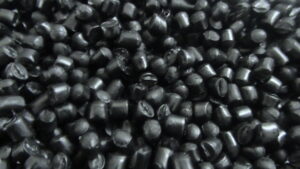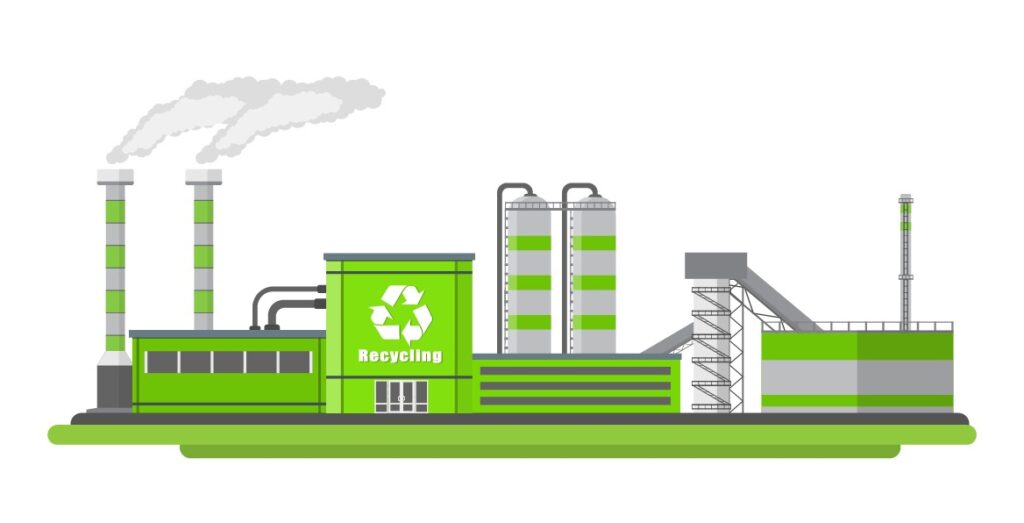Polyvinyl chloride, or PVC, is the plastic commonly known as vinyl, which can be found in everyday items from bottles to house siding. PVC content is identified on plastic containers by the number “3” in the triangular recycle symbol. The disposal and recycling process for PVC is hazardous to various degrees due to the material’s inherent chlorine content, as well as the range of chemical additives used for increasing material stability and variety in usage properties.
Disposal in a Landfill
Plastics quickly fill landfills due to their bulk and long biodegradation time. The additives in PVC plastic create further landfill problems by their potential for leeching chlorine, carcinogens, and other toxic chemicals into the soil and air. These chemicals contaminate groundwater and air quality, harmfully affecting humans and the environment. Understanding PVC as a pollution source, many European countries have adopted policies to ban PVC from landfills — a measure many American municipalities are also considering.
Disposal in Incineration
The chemicals added to PVC create additional concerns when incinerated, but large amounts of PVC are handled by municipal and hospital waste incinerators each year. When burned, PVC releases the gas form of highly corrosive hydrochloric acid. Incineration regulations state that this and other resultant toxins must be contained and neutralized, but troubling amounts have been found to leak into the atmosphere. Ash from PVC incineration also contains toxic elements, most often cadmium and lead. The presence of these two heavy metals means that the ash must be sent to controlled landfills, where space and groundwater contamination are eventual concerns.
 Used PVC can become new source material through mechanical recycling — a process that grinds plastic into a powder base for new products. This process of recycling materials does not remove any of the toxins from PVC but adding new material can dilute the existing toxicity. The mechanical recycling process is a common part the PVC industry in the reuse of post-industrial scraps.
Used PVC can become new source material through mechanical recycling — a process that grinds plastic into a powder base for new products. This process of recycling materials does not remove any of the toxins from PVC but adding new material can dilute the existing toxicity. The mechanical recycling process is a common part the PVC industry in the reuse of post-industrial scraps.
Post-consumer PVC recycling rates lag behind due to material retrieval costs, and chemical composition issues. While mechanical recycling for other post-consumer plastics is common, the additives in PVC can contaminate mixed batches and hinder system efficiency. Similarly sourced PVC is easier to recycle mechanically, so many product manufacturers run collection or buy-back programs that accept and process specific post-consumer PVC products.
 Chemical recycling methods break down plastics at a molecular level. This process is potentially beneficial because chemical separation allows the removal and reclamation of chlorine content and other toxins.
Chemical recycling methods break down plastics at a molecular level. This process is potentially beneficial because chemical separation allows the removal and reclamation of chlorine content and other toxins.
Chemical recycling requires elaborate, dedicated facilities and is more costly than mechanical recycling. For this reason, the process is less preferred for general PVC waste, but it stands as an option for many materials that are too impure or contaminated for mechanical PVC recycling.
The difficulties in the disposal and recycling of PVC have lead policymakers to focus on reduced production and usage of the material. Research is exploring less harmful PVC additives and more environmentally responsible recycling processes. Cleaner co-incineration methods are also being attempted to test the feasibility of burning waste plastic as fuel for heat generation. The notable durability of the material inspires many individuals and small-scale ventures to reuse and “upcycle” PVC products — prolonging the life of the material.